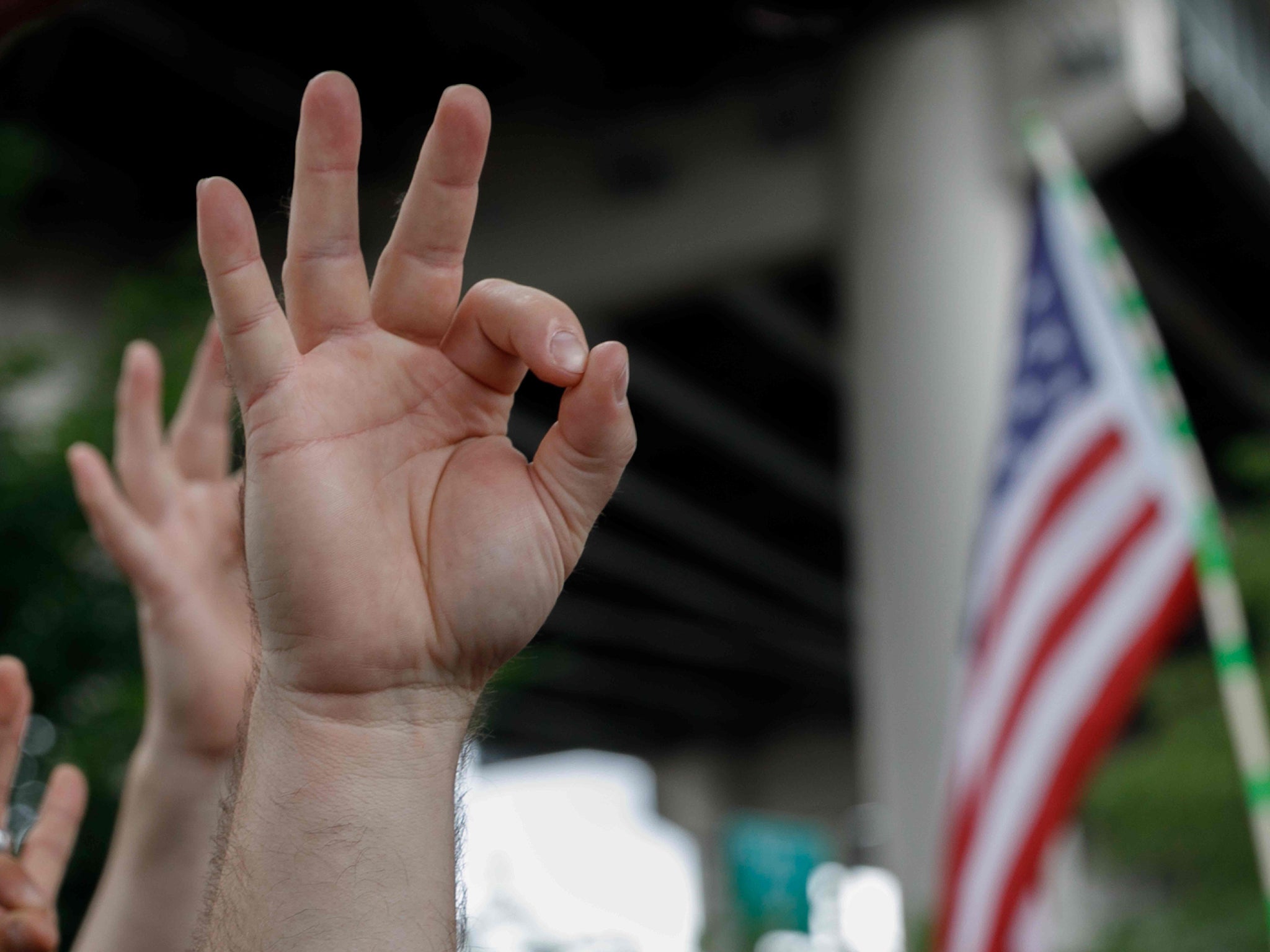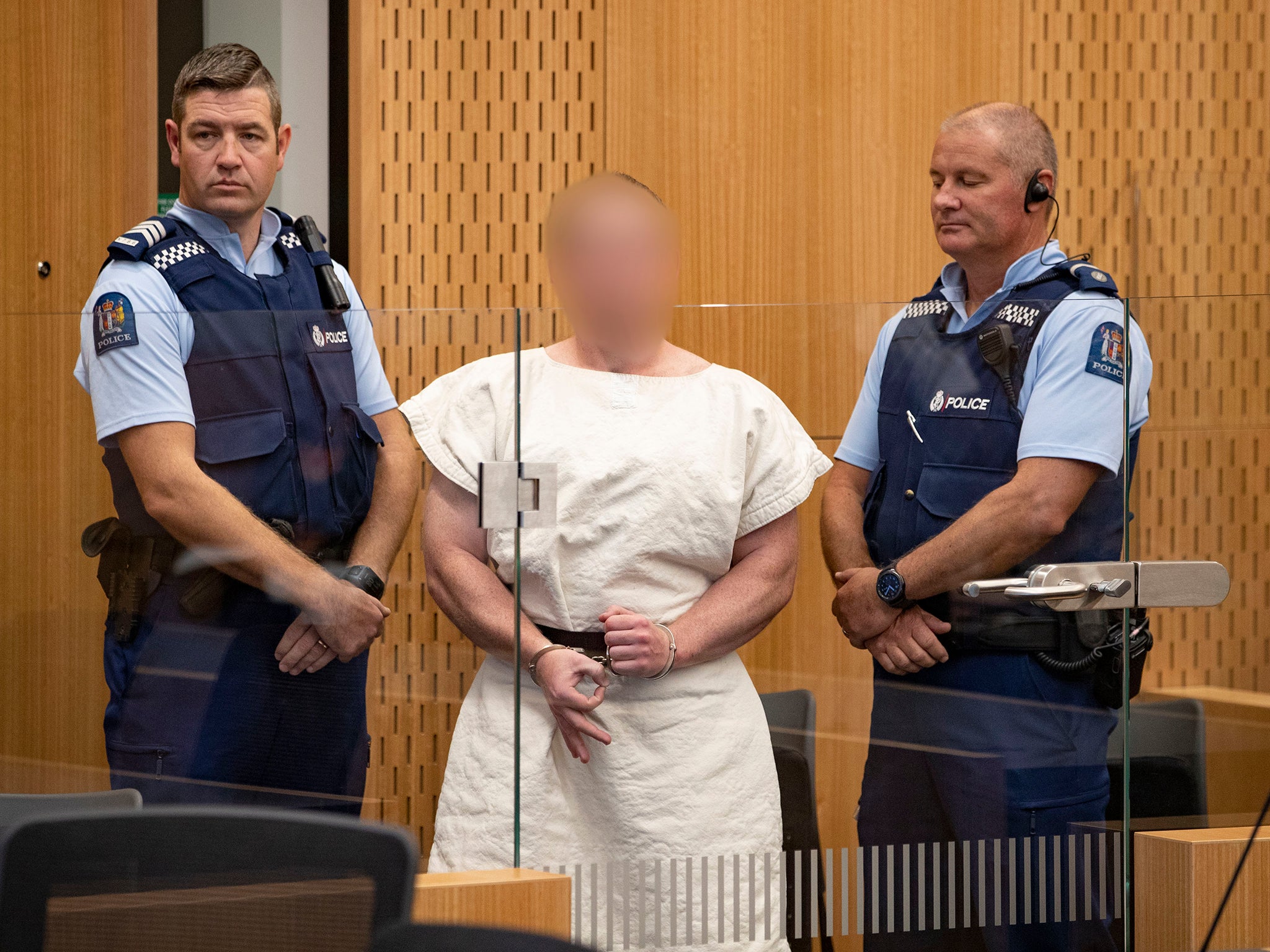How did the OK sign become a symbol of white supremacy?
Gesture been used as positive symbol for centuries before being hijacked by alt-right

Your support helps us to tell the story
From reproductive rights to climate change to Big Tech, The Independent is on the ground when the story is developing. Whether it's investigating the financials of Elon Musk's pro-Trump PAC or producing our latest documentary, 'The A Word', which shines a light on the American women fighting for reproductive rights, we know how important it is to parse out the facts from the messaging.
At such a critical moment in US history, we need reporters on the ground. Your donation allows us to keep sending journalists to speak to both sides of the story.
The Independent is trusted by Americans across the entire political spectrum. And unlike many other quality news outlets, we choose not to lock Americans out of our reporting and analysis with paywalls. We believe quality journalism should be available to everyone, paid for by those who can afford it.
Your support makes all the difference.The military is investigating whether a hand gesture displayed by cadets and midshipmen during television coverage of the Army-Navy football game on Saturday was meant to express racist sentiments.
The hand sign that was flashed on camera is one that has had a benign meaning for generations: It is commonly used to signal “OK”, or all is well. But in recent years, it has also been appropriated for other purposes, most notably as a way to signify “white power”. It has become an extremist meme, according to the Anti-Defamation League.
Officials at West Point and Annapolis are trying to determine the cadets’ motives. Here is how the hand gesture became a fraught one.
Where did the sign come from?
Touching the thumb and index finger to make a circle, with the remaining three fingers held outstretched, is a gesture that people around the world have made for centuries, mostly in positive contexts. It is used for several purposes in sign languages, and in yoga as a symbol to demonstrate inner perfection.
The widely understood modern use of the sign for approval or assent seems to have arisen along with the term “OK” in the 19th century. Some researchers have traced the word to 1839, when Charles Gordon Greene wrote jokingly in The Boston Morning Post about it being an intentionally misspelled abbreviation for “all correct”. The term caught on, and the hand gesture, with the fingers forming something vaguely like an O and K, became closely linked with it.
How did it become connected to “white power”?
It started in early 2017 as a hoax. Anonymous users of 4chan, an anonymous and unrestricted online message board, began what they called “Operation O-KKK,” to see if they could trick the wider world — and especially, liberals and the mainstream media — into believing that the innocuous gesture was actually a clandestine symbol of white power.
“We must flood Twitter and other social media websites with spam, claiming that the OK hand signal is a symbol of white supremacy,” one of the users posted, going on to suggest that everyone involved create fake social media accounts “with basic white girl names” to propagate the notion as widely as possible.
The 4chan hoax succeeded all too well and ceased being a hoax: Neo-Nazis, Ku Klux Klansmen and other white nationalists began using the gesture in public to signal their presence and to spot potential sympathisers and recruits. For them, the letters formed by the hand were not O and K, but W and P, for “white power”.

The gesture is not the only symbol to have been appropriated and swiftly weaponized by alt-right internet trolls. The Southern Poverty Law Centre has identified memes featuring the hoax religion of “Kek” and cartoon character Pepe the Frog, among others, as being at the forefront of white nationalists’ efforts to distract and infuriate liberals.
Where else has the gesture surfaced?
A number of high-profile figures on the far right have helped spread the gesture’s racist connotation by flashing it conspicuously in public, including Milo Yiannopoulos, an outspoken former Breitbart editor, and Richard Spencer, one of the promoters of the white power rally in Charlottesville, Virginia, in 2017 that resulted in the death of a 32-year-old woman.
The gesture was in the headlines again after Roger Stone, a longtime political adviser to US president Donald Trump, met with a group of white nationalists known as Proud Boys in Salem, Oregon, in 2018 and was photographed displaying it with them.
Critics expressed outrage when a former White House aide, Zina Bash, appeared to be flashing the sign as she sat behind Brett Kavanaugh during his televised Senate confirmation hearings for his appointment to the Supreme Court. Defenders of Ms Bash insisted that she had not intended any racist connotation and was merely signalling OK to someone.
That the gesture has migrated beyond ironic trolling culture to become a “sincere expression of white supremacy”, according to the Anti-Defamation League, could be seen in March 2019 when Brenton Tarrant, the white supremacist accused of killing 50 people in back-to-back mass shootings at two mosques in Christchurch, New Zealand, smiled and flashed the sign to reporters at a court hearing on his case.
Some people who have used the gesture publicly in a way that seemed to suggest support for racist views have faced consequences. In 2018, the US Coast Guard suspended an officer who appeared to use the sign on camera during an MSNBC broadcast. Later that year, four police officers in Jasper, Alabama, were suspended after a photo was published showing them flashing the sign below the waist.
The New York Times
Join our commenting forum
Join thought-provoking conversations, follow other Independent readers and see their replies
Comments